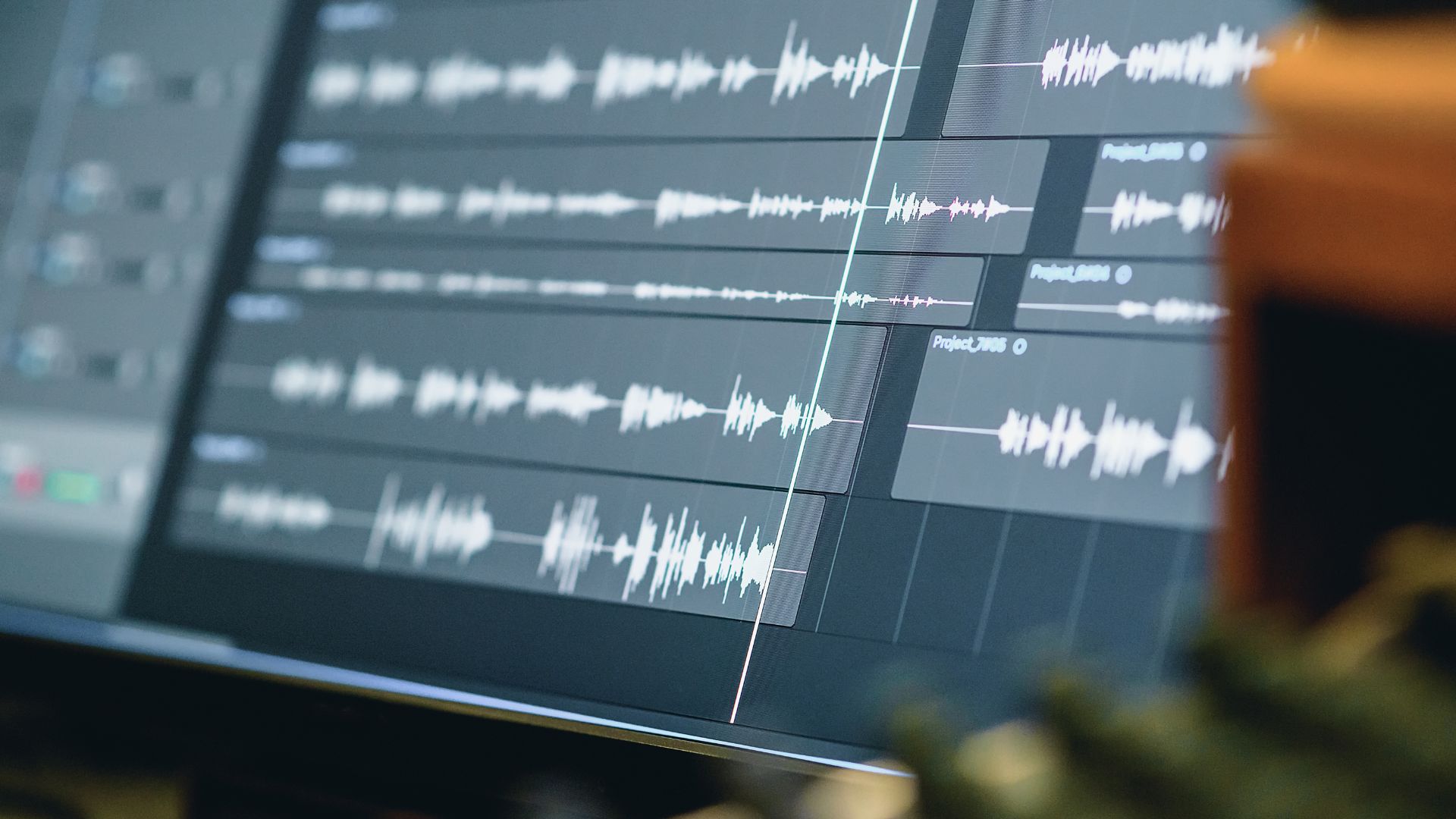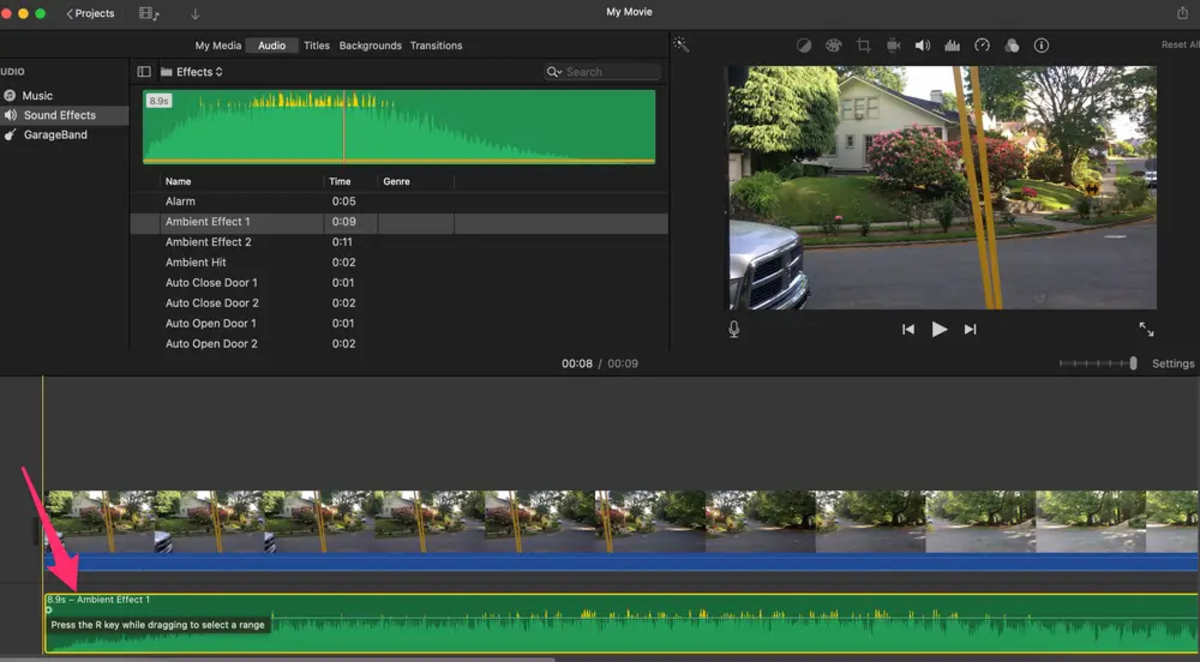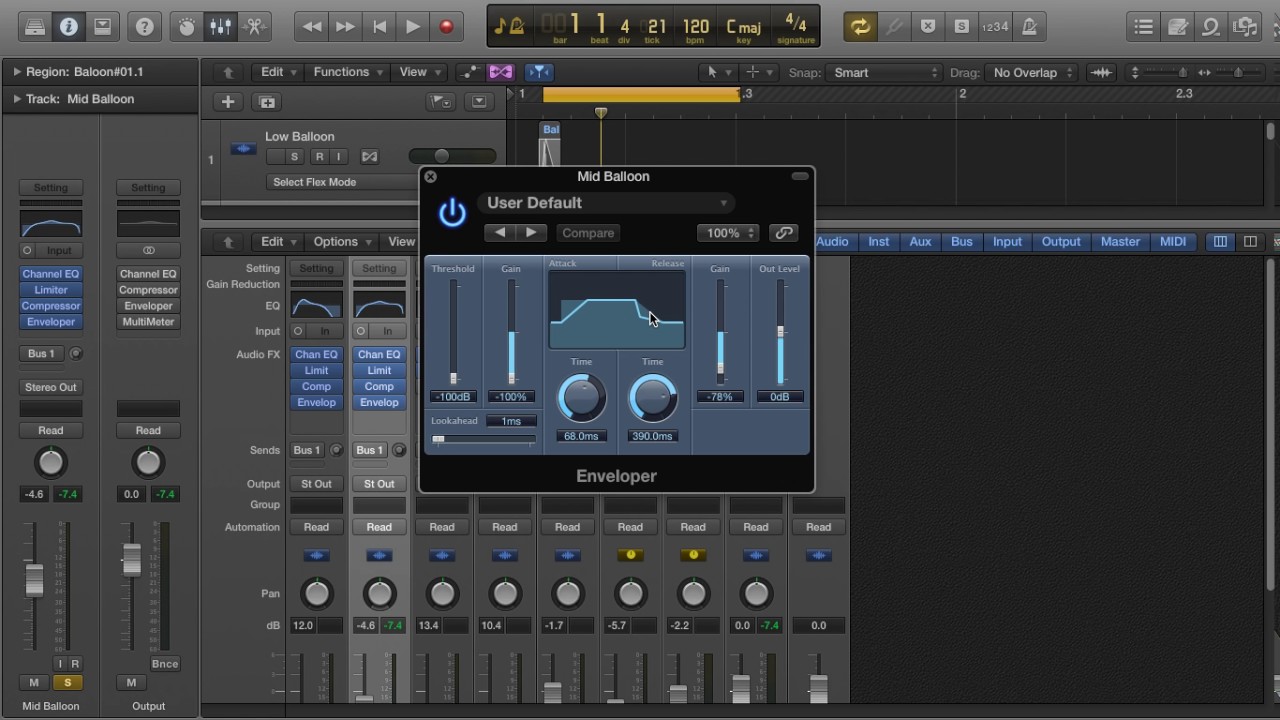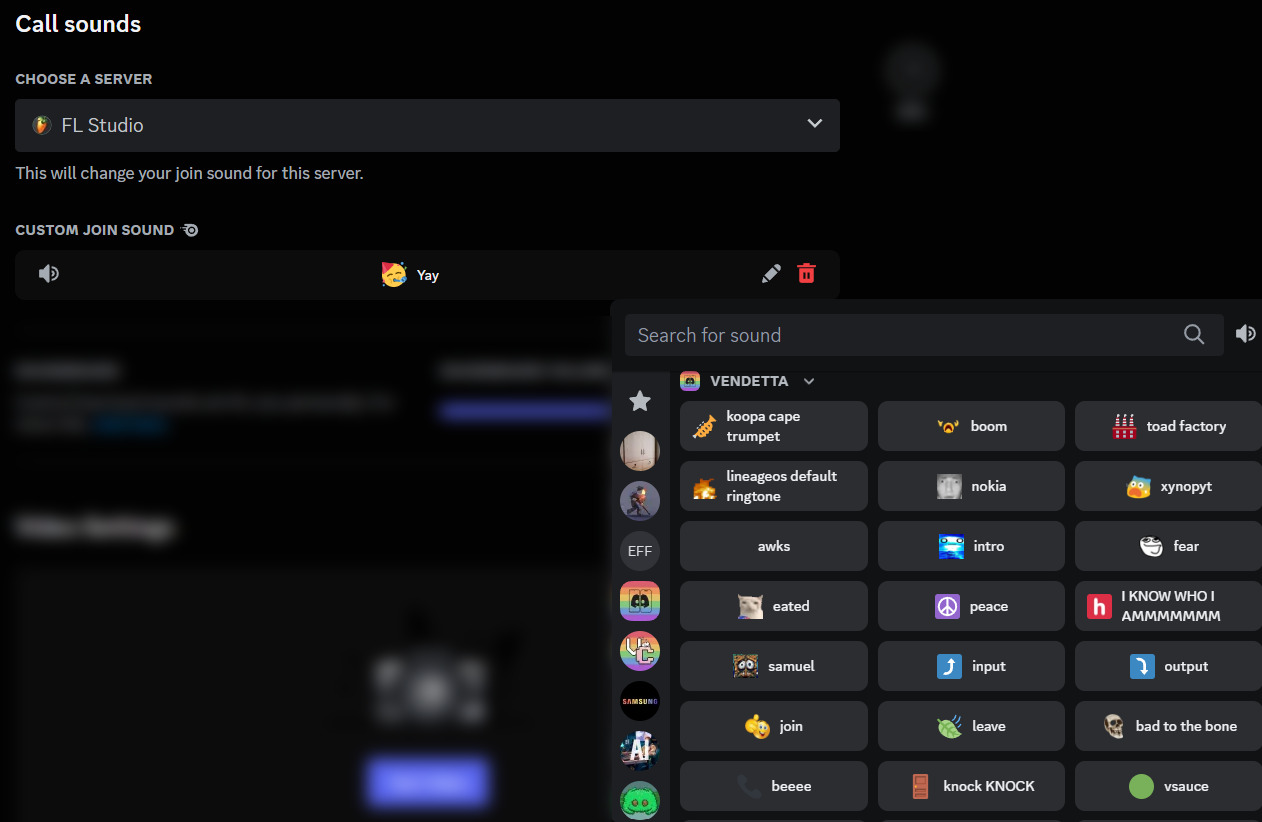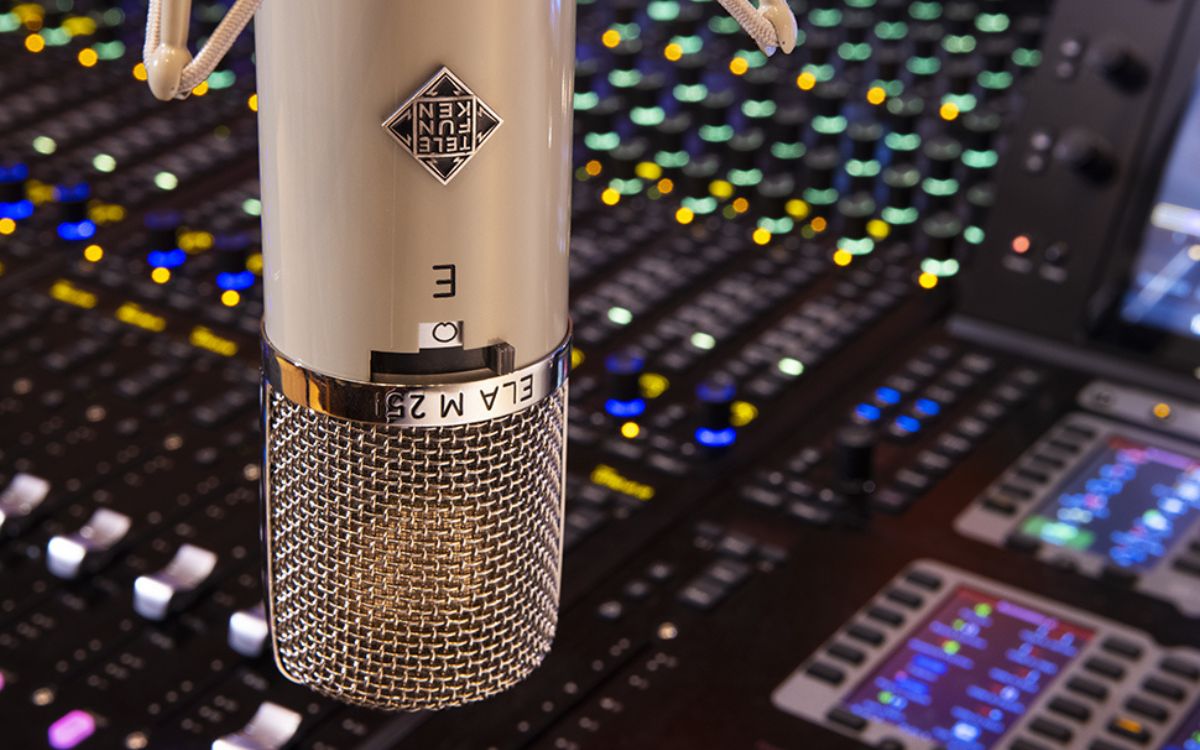Home>Production & Technology>Sound Effects>How To Do Sound Effects In A Story


Sound Effects
How To Do Sound Effects In A Story
Modified: January 22, 2024
Learn how to create captivating sound effects in your stories with our step-by-step guide. Enhance the auditory experience and bring your narrative to life.
(Many of the links in this article redirect to a specific reviewed product. Your purchase of these products through affiliate links helps to generate commission for AudioLover.com, at no extra cost. Learn more)
Table of Contents
Introduction
Welcome to the fascinating world of sound effects in storytelling. Sound effects play a crucial role in enhancing the narrative, immersing the audience, and creating a captivating experience.
Whether you’re a filmmaker, podcaster, video game designer, or simply someone interested in exploring the art of sound, understanding how to effectively use sound effects can elevate your storytelling to new heights. In this article, we will dive into the world of sound effects, covering everything from their importance to the creative process of integrating them into a story.
Sound effects are audio recordings or simulations that mimic real-life sounds or enhance fictional elements. They are used to provide auditory cues, create atmosphere, evoke emotions, and emphasize important moments in a story. From the subtle rustling of leaves to explosive gunshots, sound effects have the power to transport audiences into the world being depicted.
A well-crafted sound effect can make a scene more immersive and believable. Imagine watching a suspenseful thriller without the eerie creaking of a door or the tense music building up in the background. The impact of such moments would be severely diminished, leaving the audience feeling detached from the story.
Sound effects can be divided into two categories: diegetic and non-diegetic. Diegetic sound effects are those that are part of the story’s reality and can be heard by the characters in the narrative. For example, the sound of footsteps or the honking of a car during a chase scene. Non-diegetic sound effects, on the other hand, are added for dramatic effect and are not heard by the characters. This can include dramatic music or a rumbling thunderstorm to intensify a moment of suspense.
Now that we understand the importance and categorization of sound effects, let’s delve into the preparatory steps required to create and integrate them effectively into a story. From gathering and recording sounds to editing and mixing, we will explore the various aspects of the sound effect creation process. So, buckle up and get ready to embark on an exciting sound-filled journey!
Understanding the Role of Sound Effects in Storytelling
Sound effects are more than just background noise; they are powerful storytelling tools. They have the ability to set the mood, create tension, evoke emotions, and emphasize key moments in a story. By understanding the role of sound effects in storytelling, you can harness their potential to enhance your narrative and captivate your audience.
One of the primary functions of sound effects is to provide auditory cues that complement the visuals. They help to create a more immersive experience by making the world within the story feel alive and realistic. For example, the sound of raindrops falling, thunder rumbling, and wind howling can transport the audience to a stormy night and add depth to a scene.
Sound effects also serve to establish a sense of time and place. By using location-specific sounds, such as bustling city streets or chirping birds in a forest, you can help the audience visualize and connect with the setting of the story. This enhances the overall sense of authenticity and enables the audience to feel more engaged.
Furthermore, sound effects can enhance the emotional impact of a scene. A well-placed sound effect can intensify dramatic moments, build suspense, or elicit a specific emotional response from the audience. For instance, the sound of a door creaking slowly can create a sense of unease, while the booming crash of a powerful explosion can generate excitement and adrenaline.
In addition, sound effects are valuable tools for storytelling in mediums without visual representation, such as audio dramas or podcasts. In these cases, sound effects take on an even more significant role. They provide the necessary auditory information to help the listener visualize the story and connect with the characters and events.
It’s important to note that sound effects should never overpower or distract from the storytelling itself. They should seamlessly blend with the visuals or narration, enhancing the overall experience without drawing unnecessary attention. The goal is to strike a balance between providing auditory cues and maintaining the focus on the story.
By understanding and leveraging the role of sound effects in storytelling, you can elevate your projects to new heights. Whether you’re working on a film, podcast, video game, or any other form of storytelling, sound effects will undoubtedly enhance the immersive experience and leave a lasting impact on your audience.
Preparing for Sound Effects
Before you dive into the exciting world of sound effects, proper preparation is key to ensure a smooth and effective process. Whether you’re creating your own sound effects or sourcing them from a library, taking the time to plan and organize will make the task much more manageable. Here are some essential steps to consider when preparing for sound effects:
- Storyboard and script analysis: Take a detailed look at your storyboard or script and identify the key moments that could benefit from sound effects. Pay attention to actions, environments, and emotional beats that could be enhanced through audio. This will help you determine which sound effects you need to focus on.
- Create a sound effects list: Make a comprehensive list of the specific sound effects you require for your project. This could include footsteps, door creaks, car engines, explosions, or any other sounds relevant to your story. Break down the list by scene or category to make it more organized.
- Research and gather references: Take the time to research and listen to existing sound effects that relate to the ones you need. This will help you understand the characteristics and nuances of each sound and guide you in the creation or selection process. Create a folder or playlist of reference samples to have easy access during the production phase.
- Consider sound effect licensing: If you plan to use pre-existing sound effects from online libraries, make sure to understand the licensing agreements and usage restrictions. Some sound effects may require attribution or have limitations on commercial use. Ensure that the sound effects you choose align with your project’s requirements.
- Equipment and recording setup: If you plan to create your own sound effects, ensure you have the necessary equipment. A good quality microphone, audio interface, and recording software will be essential. Set up a quiet space for recording and consider using various props or objects to create the desired sounds.
- Organize your sound library: If you already have a collection of sound effects, ensure they are well-organized for easy access. Use descriptive filenames, create folders for different categories, and consider using software or apps designed for managing and searching sound libraries.
By following these steps, you will be well-prepared to embark on your sound effects journey. Preparing in advance will save you time, keep you organized, and ensure that you have everything you need to create or source the perfect sound effects for your project. So, get ready to step into the world of sound and bring your stories to life through audio!
Gathering and Recording Sound Effects
Gathering and recording sound effects is a creative and exciting process that allows you to capture unique and authentic sounds for your storytelling. Whether you’re a fan of field recording or prefer using Foley techniques, the goal is to collect a diverse range of high-quality sound effects that align with your project’s needs. Here are some helpful tips to guide you in gathering and recording sound effects:
- Location scouting: Explore different locations that offer potential for interesting soundscapes. Natural environments, urban settings, and specific architectural structures can all provide opportunities for capturing distinctive sounds. Pay attention to the acoustics and ambient noise levels of each location.
- Research and experimentation: Prioritize research and experimentation when it comes to capturing specific sounds. Understand the unique characteristics of each sound you want to record and experiment with different techniques and props to achieve the desired result. For example, you can use different materials to replicate footsteps or experiment with objects to create unique, custom sounds.
- Use appropriate recording equipment: Invest in a good quality microphone and audio recorder to ensure optimal sound capture. Shotgun microphones are ideal for recording from a distance, while omnidirectional or binaural microphones can capture immersive 3D soundscapes. Additionally, consider using windshields and pop filters to minimize unwanted noise.
- Controlled recording environment: Sometimes, it’s necessary to create a controlled environment to capture specific sound effects. This can involve soundproofing a room or setting up a recording booth to minimize external noise and interference. Controlling the environment allows for greater precision and eliminates the need for extensive post-processing.
- Experiment with mic placement: Play around with microphone placement to capture different perspectives or variations of a sound. Move the microphone closer or farther away from the sound source, try different angles, and consider capturing multiple takes to have options during the editing process.
- Record wild tracks: In addition to capturing sounds in sync with your visuals, consider recording “wild tracks.” Wild tracks are isolated recordings of specific sounds that can be layered and mixed during the post-production phase. These standalone recordings provide flexibility and allow for more creative possibilities.
- Keep a record of metadata: To ensure easy retrieval and organization of your sound effects library, create a detailed record of metadata for each recording. Include information such as date, location, equipment used, and a brief description of the sound. This will save you time in the future when searching for specific effects.
Remember, gathering and recording sound effects is a continuous process. Keep your recording equipment handy and be open to capturing sounds in unexpected moments. With time and practice, you’ll develop a keen ear for unique sound opportunities and create a rich library of sound effects that enhance your storytelling efforts.
Editing and Mixing Sound Effects
Editing and mixing sound effects is a crucial step in the sound design process. It involves refining and enhancing the raw recordings to create a cohesive and immersive soundscape that complements your story. Through careful editing, layering, and balancing, you can bring your sound effects to life and ensure they seamlessly integrate with the visuals or narration. Here are some essential tips for editing and mixing sound effects:
- Organize your sound effects: Before you begin editing, make sure your sound effects library is well-organized and easily searchable. Use descriptive file names and categorize them to streamline the editing workflow.
- Choose the right software: Invest in a professional audio editing software that provides the necessary tools and flexibility for editing sound effects. Popular options include Adobe Audition, Pro Tools, and Logic Pro.
- Trim and clean up: Start by trimming the sound effects to the desired length and removing any unwanted noise or artifacts. Use audio editing techniques like spectral editing, noise reduction, and EQ to clean up the recordings and improve their quality.
- Layering and blending: Experiment with layering multiple sound effects together to create depth and realism. For example, layering different footsteps recordings, each with a slightly different texture or resonance, can make the footstep sound more natural. Adjust the volume and panning of each layer to create a balanced mix.
- Consider timing and sync: Ensure that the timing of the sound effects aligns with the visuals or narrative. Pay attention to the synchronization between the action on screen and the sound effects to create a seamless and cohesive experience for the audience.
- Use effects and processing: Apply effects and processing to enhance the sound effects when necessary. This can include adding reverb or delay to create a sense of space, using equalization to shape the frequency balance, or applying modulation effects for a unique and creative sound.
- Pay attention to dynamics: Adjust the dynamics of the sound effects to match the overall dynamics of the scene. Ensure that the loudness and intensity of the sound effects accurately reflect the action or emotion being portrayed.
- Consider the overall mix: When mixing sound effects, remember to consider the balance between the other audio elements, such as dialogue, music, and ambience. Each element should have its intended place in the mix, allowing the sound effects to be heard and felt without overpowering other important components.
- Test and iterate: Take the time to test your edited and mixed sound effects in various playback environments, such as different speakers or headphones. Listen critically and make adjustments as needed to ensure the sounds translate well across different platforms and devices.
Editing and mixing sound effects require both technical skills and a keen artistic sensibility. It’s a process of fine-tuning and refining, transforming raw recordings into polished audio elements that enhance the storytelling experience. With practice and experimentation, you’ll be able to create a captivating soundscape that engages and immerses your audience.
Integrating Sound Effects into the Story
Integrating sound effects into the story is the final step in the sound design process, where you bring together all the elements to create a cohesive and immersive sonic experience. The goal is to seamlessly blend the sound effects with the visuals or narrative, enhancing the storytelling and creating a more captivating and engaging experience for the audience. Here are some essential considerations when integrating sound effects:
- Emphasize key moments: Identify the pivotal moments in your story where sound effects can have the greatest impact. These moments could be actions, reactions, or significant plot points. By strategically placing sound effects at these points, you can draw attention, evoke emotions, and heighten the overall impact of the scene.
- Create a sense of space: Use sound effects to establish the environment and create a sense of space within the story. By adding ambient sounds like room tone or background noises, you can immerse the audience in the scene and enhance its believability. Pay attention to the spatial characteristics and adjust the panning and volume accordingly.
- Synchronize with visuals or narration: Time the sound effects to align with the visuals or narration. The timing and synchronization between the audio and visual elements should be precise and seamless. This can involve matching the sound effects to specific actions on screen or timing them with the rhythm and pacing of the narration.
- Transition and continuity: Smoothly transition between different sound effects to maintain continuity and avoid jarring changes. Use fade-ins, fade-outs, or crossfades to create seamless transitions between different sound elements and avoid abrupt changes that may distract or take the audience out of the story.
- Use sound effects to enhance emotions: Leverage sound effects to amplify emotions and emphasize the mood of a scene. For example, the sound of a heartbeat accelerating during a tense moment or calm ambient sounds during a peaceful scene can intensify the emotions being portrayed.
- Consider the overall audio mix: Ensure that the sound effects blend harmoniously with other audio elements, such as dialogue and music. The balance and interaction between different sound elements should be carefully managed to create a cohesive and immersive sonic experience.
- Test and refine: Listen to the integrated sound effects in various playback environments to ensure they translate well and deliver the intended impact on different devices. Make adjustments as needed and iterate on the integration process to achieve the desired result.
Integrating sound effects into the story requires a keen understanding of the narrative and a careful balance between artistic expression and technical precision. It’s an art form that enhances the storytelling experience by adding an extra layer of depth and immersion. By thoughtfully applying sound effects, you can engage your audience and create a memorable and captivating sonic journey.
Importance of Sound Effects in Enhancing the Narrative
Sound effects play a vital role in enhancing the narrative of a story. They have the power to create atmosphere, evoke emotions, and immerse the audience in the world being depicted. Here are some reasons why sound effects are essential in enhancing the narrative:
- Creating realism and authenticity: Sound effects add a layer of realism to the story by recreating the sounds that occur naturally in the world. They create a sense of authenticity and help the audience believe in the reality of the depicted scenes. For example, the sound of footsteps or the rustling of leaves can transport the audience into the story and make it more believable.
- Setting the mood and tone: Sound effects are powerful tools for setting the mood and tone of a scene or an entire story. Whether it’s a horror film with eerie sounds, a romantic comedy with whimsical chimes, or a documentary with naturalistic environmental sounds, the right sound effects can instantly establish the desired atmosphere and evoke the intended emotions.
- Providing auditory cues and enhancing storytelling: Sound effects serve as auditory cues that guide the audience’s perception and understanding of the narrative. They can highlight important moments, clarify actions, and draw attention to specific details. For example, the sound of a phone ringing can alert the audience to an incoming call, or the sound of a door opening can indicate a character’s entrance.
- Building tension and suspense: Sound effects are instrumental in creating tension and suspense in storytelling. A well-timed and appropriately chosen sound effect can elevate suspenseful moments, increase anticipation, and keep the audience on the edge of their seats. The right sound effect can be the difference between a mildly intense scene and a heart-pounding, gripping sequence.
- Enhancing character development: Sound effects can help define and develop characters by providing auditory cues associated with their actions or presence. For instance, the sound of a distinctive weapon being unsheathed can become synonymous with a particular character, instantly signaling their appearance or actions without the need for visual cues. These subtle audio cues can deepen the audience’s connection with the characters.
- Creating an immersive experience: Sound effects immerse the audience in the story by bringing it to life through audio. They engage not only the sense of sight but also the sense of hearing, creating a multi-sensory experience. The combination of visuals and sound effects makes the narrative more vivid, captivating, and memorable.
In summary, sound effects play a significant role in enhancing the narrative of a story. They bring realism, set the mood, provide auditory cues, build tension, enhance character development, and create an immersive experience for the audience. By carefully leveraging sound effects, storytellers can elevate their narratives, evoke emotions, and leave a lasting impact on their audience.
Conclusion
Sound effects are a vital component of storytelling, adding depth, realism, and emotion to the narrative. They have the power to create atmosphere, immerse the audience, and enhance the overall storytelling experience. From capturing and editing sound effects to integrating them seamlessly into the story, every step of the process contributes to creating a captivating and engaging audiovisual journey.
Understanding the role of sound effects in storytelling allows us to appreciate their significance and the impact they can have on the audience. Whether it’s the subtle sound of footsteps, the thunderous explosion of an action sequence, or the ambient sounds that bring a serene landscape to life, sound effects enrich our perception and emotional connection to the story being told.
Preparation is key when it comes to creating and using sound effects effectively. By organizing and gathering references, planning and scripting, and investing in the right equipment, you can ensure a smooth and efficient production process. Editing and mixing sound effects require careful attention to detail, as well as artistic and technical skills, to achieve a cohesive blend of audio elements that enhance the narrative.
Integrating sound effects into the story is the final touch, where strategic placement and synchronization with visuals or narration bring the story to life. Sound effects provide auditory cues, set the mood, and amplify emotions, enhancing the storytelling experience and captivating the audience from beginning to end.
The importance of sound effects in enhancing the narrative cannot be overstated. They create realism, set the tone, guide our perception, and create a sense of immersion. They add another layer of depth to the story, making the characters and their actions come alive in the minds of the audience.
In conclusion, sound effects are powerful storytelling tools that enhance the narrative, engage the audience, and leave a lasting impact. By leveraging the art and science of sound design, storytellers can create memorable experiences that resonate with their audience long after the story has ended.

